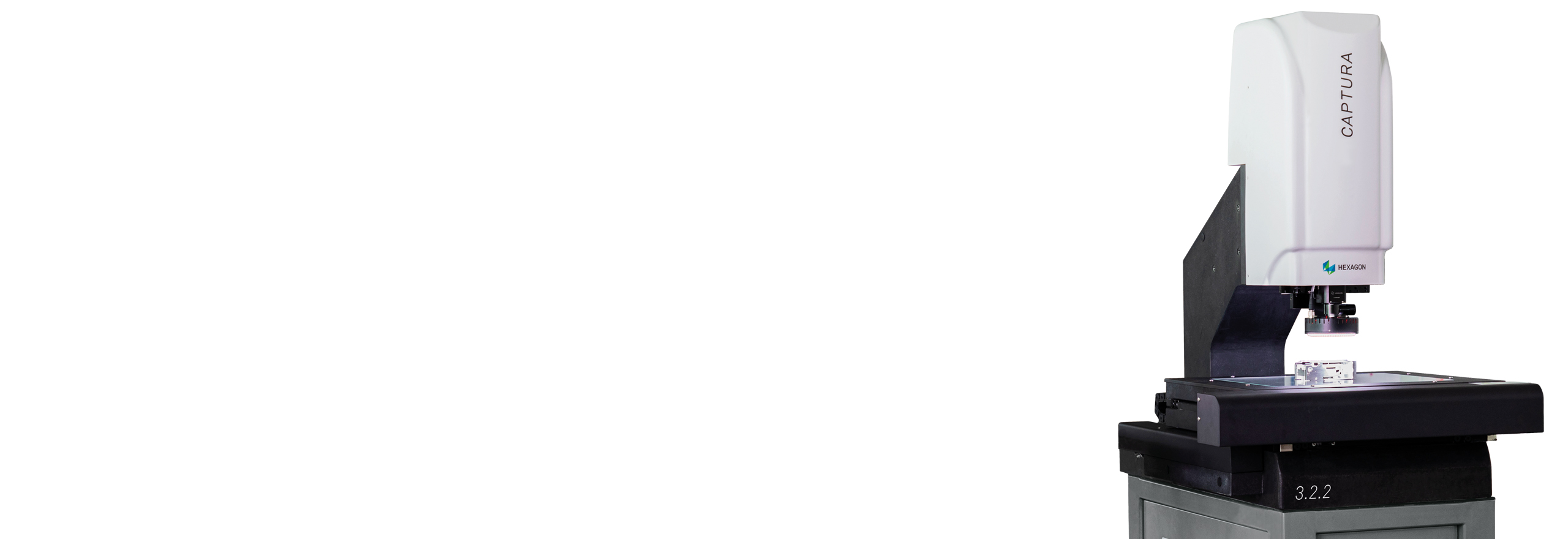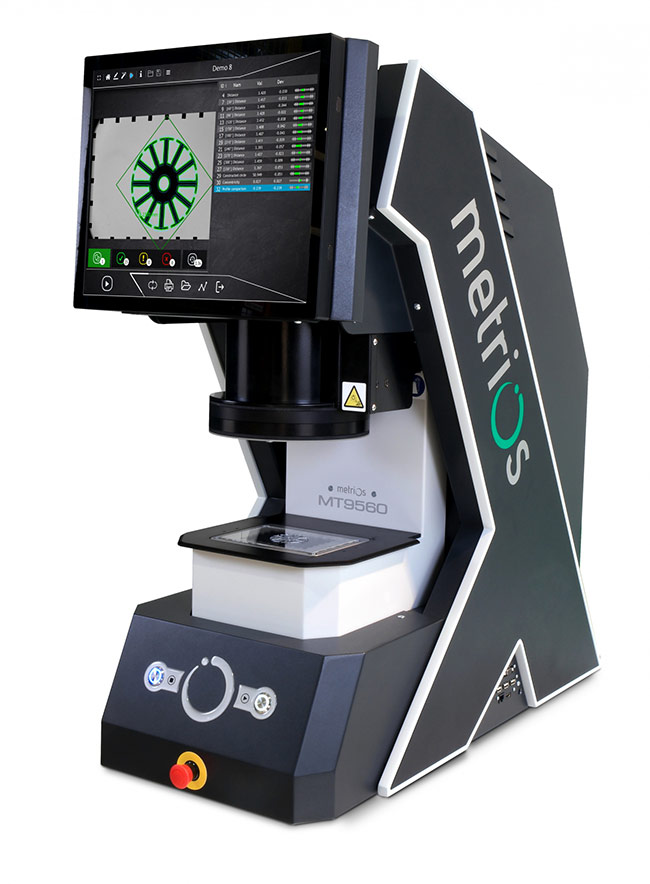What industries gain the most advantages from using optical measurement systems?
What industries gain the most advantages from using optical measurement systems?
Blog Article
The Role of Optical Measurement Equipments in Advancing Assessment Techniques
Optical measurement systems have changed width, bringing a degree of accuracy that was as soon as inconceivable. As you discover additionally, you'll uncover just how these systems are shaping the future of dimension and quality control.
The Development of Metrology: A Historical Point Of View
As you check out the history of assessment, you'll find that its evolution mirrors mankind's quest for precision and standardization. From ancient people making use of body components as units of dimension to the growth of standard weights and actions, each step reveals our need for accuracy. The Egyptians constructed the pyramids using exact measurements, while the Romans progressed engineering with their innovative measuring devices.
Throughout the Renaissance, scientific advancements moved the emphasis towards much more empirical techniques, leading the way for modern-day metrology. The introduction of the metric system in the late 18th century noted a considerable landmark, developing universal criteria. Throughout the 20th century, technical improvements further transformed assessment, enabling highly accurate dimensions in numerous fields.
Today, metrology remains to evolve, incorporating electronic technology and automation. This history highlights not simply the importance of dimension but also our relentless pursuit of improving precision and consistency in our significantly complicated globe.
Concepts of Optical Measurement Solutions
Recognizing the concepts behind optical dimension systems is vital for precise results in metrology. You'll wish to think about fundamental optical concepts, dimension precision factors, and efficient system calibration techniques. Each of these components plays a vital role in guaranteeing your measurements are dependable and exact.
Fundamental Optical Principles
While checking out optical measurement systems, you'll experience basic optical concepts that form the foundation of exact information acquisition. Light behaves in predictable means, and recognizing these behaviors-- like diffraction, representation, and refraction-- is necessary for efficient dimensions. By grasping these principles, you'll be equipped to take advantage of optical innovations effectively, paving the method for innovations in metrology and guaranteeing your measurements are both repeatable and reliable.
Measurement Accuracy Variables
To accomplish high dimension precision in optical systems, numerous aspects come right into play, influencing the reliability of your results. First, the high quality of the optical elements matters greatly. Top notch lenses and detectors lower aberrations and noise, ensuring your dimensions are precise. Second, ecological conditions like temperature level and humidity can influence dimensions, so maintaining a stable setting is important. Third, the positioning of the optical system is important; also small imbalances can bring about substantial errors. Finally, the wavelength of light used influences the resolution and precision of your dimensions. By attending to these aspects, you can boost the general efficiency of your optical measurement systems, resulting in even more exact and trustworthy cause your width applications.
System Calibration Methods
Accomplishing high dimension precision is just component of the equation; proper system calibration strategies are equally important in optical dimension systems. To guarantee your system provides reliable outcomes, you ought to routinely adjust it making use of standard recommendation products. Start by changing the optical parts, like lenses and mirrors, to decrease organized mistakes. Next, use well-known dimensions to confirm the system's output and make necessary adjustments. It's also vital to represent environmental aspects-- temperature and humidity can impact measurements. Execute a regular calibration routine to maintain consistency with time. Record all calibration procedures and results; this will aid you track efficiency and attend to any drift in accuracy. With these techniques, you'll boost the integrity of your optical measurement system.
Key Technologies Behind Optical Dimension
Optical dimension systems rely upon numerous crucial technologies that improve precision and effectiveness in metrology. One necessary innovation is interferometry, which makes use of the disturbance of light waves to measure tiny variations and surface irregularities with severe precision. You'll additionally find laser scanning systems, which record comprehensive 3D data of objects quickly, making them vital for dimensional analysis.
Additionally, CCD and CMOS sensors play a considerable duty in converting light right into electric signals, enabling high-resolution imaging and exact measurements. Advanced formulas for image handling further boost dimension precision by assessing information in real time, filtering out noise and enhancing features.
Finally, fiber optics supply adaptability and the ability to measure in hard settings while keeping signal stability. By leveraging these modern technologies, you can attain superior cause your metrology tasks, making certain that your dimensions are both exact and trusted.
Applications of Optical Dimension in Industry
As sectors more information increasingly require accuracy and performance, the applications of optical dimension systems have actually ended up being important throughout different markets. In production, these systems aid you keep track of measurements and tolerances in real-time, making sure top quality control without taxing manual checks. In the vehicle market, optical measurements help in straightening components with accuracy, improving security and performance.
In electronic devices, you're using optical approaches to inspect minute features on motherboard, spotting issues that can result in failings. The aerospace field gain from non-destructive testing methods, permitting you to analyze products and components without jeopardizing their honesty.
Optical measurement also plays a vital role in fabrics, making sure textile dimensions satisfy exact specifications. optical measurement. With their capacity to supply high-resolution data promptly, these systems encourage you to make educated choices, streamline processes, and eventually drive advancement throughout your market
Enhancing Accuracy and Performance in Dimensions
When you consider enhancing accuracy in measurements, precision in your measurement techniques is crucial. By enhancing these procedures, you can achieve quicker outcomes without sacrificing quality. Let's discover how embracing sophisticated optical measurement systems can elevate both precision and performance in your job.
Precision in Measurement Techniques
Accuracy in dimension strategies is essential for achieving reliable outcomes in metrology, especially given that tiny disparities can lead to substantial mistakes. By using advanced optical measurement systems, you can boost the accuracy of your measurements. In addition, accurate measurements allow you to maintain high quality control, guaranteeing that items fulfill rigid specs.
Streamlining Dimension Processes
To enhance accuracy and effectiveness in dimensions, enhancing your measurement procedures is essential. Begin by taking on optical measurement systems that offer real-time data, minimizing the moment invested in hand-operated recording. These systems often incorporate perfectly with existing software application, enabling you to automate information collection and evaluation.
Following, systematize your measurement protocols. By carrying out regular procedures, you minimize variability and enhance repeatability. Don't forget to routinely adjust your tools to guarantee its accuracy.

The Impact of Optical Dimension on Research Study and Growth
As scientists endeavor to push the boundaries of innovation, optical dimension systems have actually become vital devices in the development procedure. These systems offer you with specific, real-time data that boosts your capacity to right here assess complicated products and structures. In various areas, from biotechnology to aerospace, you depend on optical measurements to improve and maximize layouts product efficiency.

With high-resolution imaging and non-contact techniques, you can minimize example disruption, permitting more precise outcomes. This capability to capture minute details accelerates your R&D cycle, allowing you repeat styles promptly and effectively. Additionally, optical measurement fosters cooperation throughout self-controls, as the data produced is often easily interpretable and shareable.
Eventually, incorporating optical measurement systems into your research not only boosts productivity however additionally grows your understanding of the phenomena you research. By leveraging these innovative techniques, you're better geared up to innovate and stay in advance in an affordable landscape.
Future Trends in Optical Measurement Systems
With the rapid development of technology, you're likely to see substantial changes in optical measurement systems that will certainly redefine their application throughout different markets. You'll discover a relocation towards raised automation and integration of fabricated knowledge, enabling real-time data analysis and boosted precision. Miniaturization is one more pattern; portable devices will make it possible for measurements in tighter areas, making them suitable for areas like aerospace and biomedical applications.
Expect to see systems that can operate in challenging settings, providing trusted dimensions in severe problems. As these technologies merge, you'll find that optical measurement systems not just boost accuracy yet likewise streamline operations, inevitably driving technology and performance in your jobs.
Regularly Asked Inquiries
Just How Do Optical Measurement Equipments Contrast to Standard Measurement Techniques?
Optical dimension systems use greater accuracy and faster results contrasted to conventional techniques. You'll discover they catch even more information factors precisely, decreasing human error and boosting reliability, making them a favored selection in different applications.
What Industries Advantage Most From Optical Measurement Systems?
You'll locate industries such as aerospace, auto, and electronic devices profit most from optical measurement systems. These sectors rely on specific measurements to guarantee quality and efficiency, boosting efficiency and minimizing prices through sophisticated innovation.

Are Optical Dimension Solutions Expensive to Carry Out?
Optical measurement systems can be expensive to carry out, however their accuracy and efficiency often justify the cost. Buying such innovation can cause significant lasting savings and enhancements in quality throughout various applications.
What Skills Are Required to Operate Optical Dimension Equipments?
To operate optical measurement systems, you'll need strong analytical abilities, focus to detail, and proficiency in software devices. Familiarity with optics and an understanding of measurement principles will certainly also boost your effectiveness and efficiency.
Just How Do Ecological Aspects Affect Optical Measurements?
Environmental aspects like humidity, air, and temperature level top quality can distort optical measurements. You'll notice variations in precision as a result of light disturbance or refraction. optical measurement. Keeping stable conditions is vital for dependable and accurate optical dimension results
Conclusion
In summary, optical measurement systems are revolutionizing metrology by giving unrivaled accuracy and efficiency. As you explore future trends, you'll see exactly how the integration of AI and automation will certainly continue to boost dimension techniques, driving technology and improving top quality control.
Attaining high dimension accuracy is only part of the equation; appropriate system calibration methods are equally vital in optical dimension systems.When you believe concerning improving accuracy in dimensions, additional info accuracy in your dimension methods is important. By using sophisticated optical dimension systems, you can boost the precision of your measurements.To improve accuracy and performance in dimensions, improving your dimension processes is crucial. Exactly How Do Optical Dimension Equipments Compare to Traditional Dimension Techniques?
Report this page